The Shambles
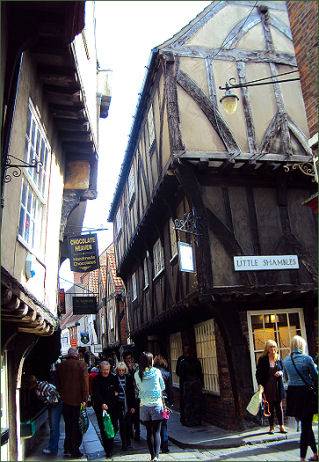
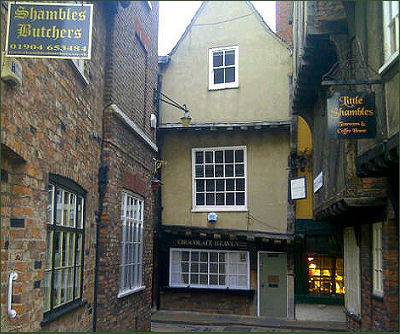 The Shambles, with its unique charm, is one of the most famous streets in Britain and one of York's foremost attractions. The street is situated between Pavement and King's Square.
The Shambles, with its unique charm, is one of the most famous streets in Britain and one of York's foremost attractions. The street is situated between Pavement and King's Square.
The Shambles is a meandering medieval street with much character, it features overhanging timber-framed buildings, some of which date back to as early as the fourteenth century.
There is evidence of butchers using the street for their shops from before the Norman Conquest. The street is mentioned in the Domesday Book of 1086. It has had various names over the centuries, including Haymongergate, Nedlergate, Fleshammels and then the Shamble.
It was once known as The Great Flesh Shambles, probably deriving from the Anglo-Saxon Fleshammels which literally meant 'flesh-shelves', the word for the shelves on which butchers used to display their meat for customers. As recently as 1872 there were twenty-five butchers' shops in the street but now there are none.
In some of the narrower sections of the Shambles it is possible, with your arms outstretched, to touch both sides of the street. During the medieval period there were no sanitary facilities or hygiene laws as those that exist today, and offal and blood were often thrown into a runnel down the middle of the street. The pavements were raised either side of the cobbled street to form a channel where the butchers would wash away their offal and blood twice a week.
The architecture which now appears so quaint and picturesque had a very practical purpose in Medieval York. The overhanging timber-framed fronts of the buildings are deliberately close-set so as to provide shelter to the wattle and daub walls below. This would also have protected the meat from the effects of direct sunshine.
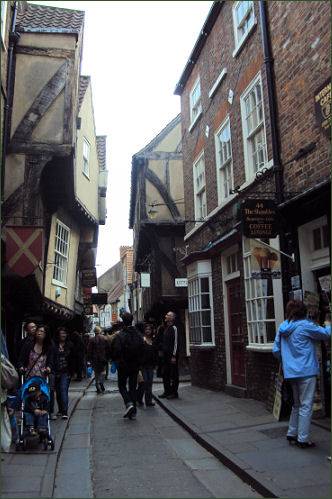 The butcher's shops have now been replaced with shops catering to tourist trade, including jewelry, antiques, books and souvenir shops, cafes and restaurants. The Shambles
has now become one of the premier shopping areas in the city and a great favourite with visitors to York.
The butcher's shops have now been replaced with shops catering to tourist trade, including jewelry, antiques, books and souvenir shops, cafes and restaurants. The Shambles
has now become one of the premier shopping areas in the city and a great favourite with visitors to York.
Although the butchers have now vanished, a number of the shops on the street still possess the meat-hooks hanging outside and, below them, shelves on which meat would have been displayed. The Shambles was awarded 'Most Picturesque Street in Britain' in the Google Streetview Awards of 2010.
The Shrine of St. Margaret Clitherow
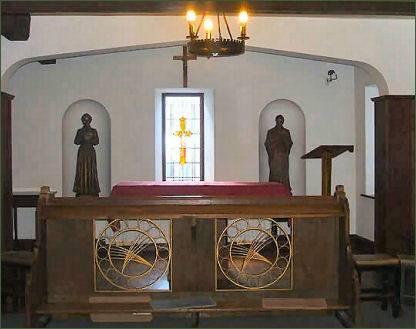 Among the buildings of the Shambles is the shrine of Saint Margaret Clitherow (1556 - 25 March 1586), sometimes referred to as "the Pearl of York", who was crushed to death in Elizabethan times for harbouring Roman Catholic priests.
Among the buildings of the Shambles is the shrine of Saint Margaret Clitherow (1556 - 25 March 1586), sometimes referred to as "the Pearl of York", who was crushed to death in Elizabethan times for harbouring Roman Catholic priests.
Margaret who was born as Margaret Middleton, the daughter of a wax-chandler. At the age of 18 she married John Clitherow, a York butcher, in 1571. The couple had three children, one of whom, Henry, went to Reims to train as a Roman Catholic priest.
John Clitherow owned and lived in a shop in the Shambles. Her home is now a cufflinks shop, Cuffs & Co, and features the priest hole fireplace that ultimately led to her death. A house in the Shambles once thought to have been her home, now called the Shrine of the Saint Margaret Clitherow, is open to the public.
She converted to Roman Catholicism at the age of 21, in 1574. Her husband John was supportive, as he had had a brother who was Roman Catholic clergyman, though he himself remained Protestant. Margaret had Mass celebrated in secret above the family's house and shop in the Shambles. The attic space was linked together along the row of houses so that the priest could escape should there have been a raid. She also ran a small school to teach the Catholic Faith to children.
In 1586, she was arrested and called before the York assizes at the Guildhall, for the crime of harbouring Roman Catholic priests. She refused to plead to the case so as to prevent a trial that would entail her children being made to testify, and was therefore subjected to torture. As a result, although pregnant with her fourth child, Margaret was executed by being crushed to death, the standard inducement to force a plea, on Good Friday 1586, her execution took place at the Toll Booth on the Ouse Bridge. It involved laying her on the ground with a fist-sized rock placed under her back. She would then have had a plank of wood placed on top of her which was loaded with heavy rocks, but Margaret staunchly refused to speak.
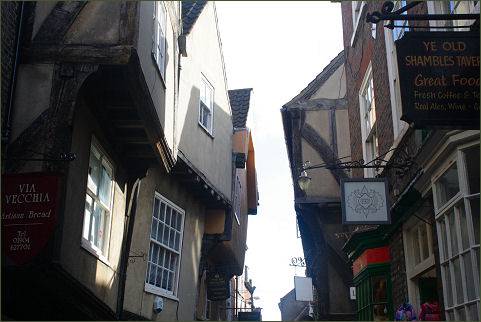
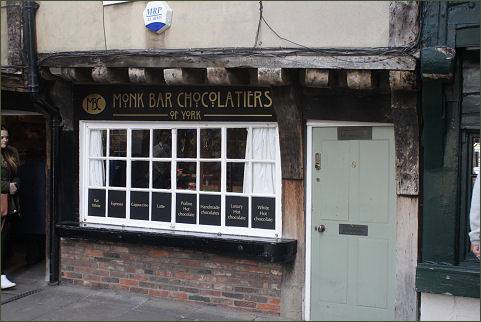
Her death occurred within fifteen minutes, but her body was left for six hours before the weight was removed. After her death her hand was removed, and this relic is now housed in the chapel of the Bar Convent, York.
Guide to the Streets of York
| Coney Street | Coppergate | Fossgate | Goodramgate |
| Minster Close | Pavement | Petergate | The Shambles |
| Snickelways of York | Stonegate |
